Related Research Articles
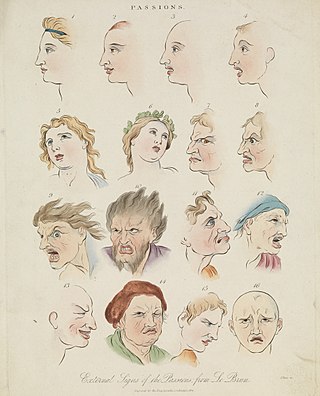
Emotions are mental states brought on by neurophysiological changes, variously associated with thoughts, feelings, behavioral responses, and a degree of pleasure or displeasure. There is no scientific consensus on a definition. Emotions are often intertwined with mood, temperament, personality, disposition, or creativity.

Neuroscience is the scientific study of the nervous system, its functions and disorders. It is a multidisciplinary science that combines physiology, anatomy, molecular biology, developmental biology, cytology, psychology, physics, computer science, chemistry, medicine, statistics, and mathematical modeling to understand the fundamental and emergent properties of neurons, glia and neural circuits. The understanding of the biological basis of learning, memory, behavior, perception, and consciousness has been described by Eric Kandel as the "epic challenge" of the biological sciences.
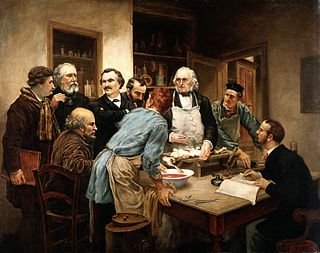
Physiology is the scientific study of functions and mechanisms in a living system. As a subdiscipline of biology, physiology focuses on how organisms, organ systems, individual organs, cells, and biomolecules carry out chemical and physical functions in a living system. According to the classes of organisms, the field can be divided into medical physiology, animal physiology, plant physiology, cell physiology, and comparative physiology.
Psychophysiology is the branch of psychology that is concerned with the physiological bases of psychological processes. While psychophysiology was a general broad field of research in the 1960s and 1970s, it has now become quite specialized, based on methods, topic of studies and scientific traditions. Methods vary as combinations of electrophysiological methods, neuroimaging, and neurochemistry. Topics have branched into subspecializations such as social, sport, cognitive, cardiovascular, clinical and other branches of psychophysiology.

Arachnology is the scientific study of arachnids, which comprise spiders and related invertebrates such as scorpions, pseudoscorpions, and harvestmen. Those who study spiders and other arachnids are arachnologists. More narrowly, the study of spiders alone is known as araneology.
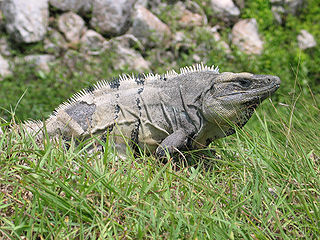
Ctenosaura is a lizard genus commonly known as spinytail iguanas or ctenosaurs. The genus is part of the large lizard family, Iguanidae and is native to Mexico and Central America. The name is derived from two Greek words: κτενός, meaning "comb", and σαύρα, meaning "lizard".
Basal metabolic rate (BMR) is the rate of energy expenditure per unit time by endothermic animals at rest. It is reported in energy units per unit time ranging from watt (joule/second) to ml O2/min or joule per hour per kg body mass J/(h·kg). Proper measurement requires a strict set of criteria to be met. These criteria include being in a physically and psychologically undisturbed state and being in a thermally neutral environment while in the post-absorptive state (i.e., not actively digesting food). In bradymetabolic animals, such as fish and reptiles, the equivalent term standard metabolic rate (SMR) applies. It follows the same criteria as BMR, but requires the documentation of the temperature at which the metabolic rate was measured. This makes BMR a variant of standard metabolic rate measurement that excludes the temperature data, a practice that has led to problems in defining "standard" rates of metabolism for many mammals.
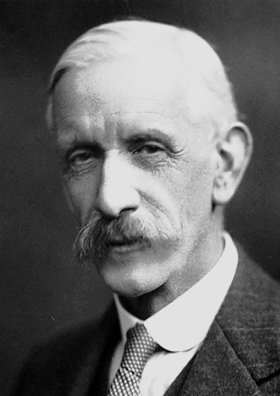
Sir Frederick Gowland Hopkins was an English biochemist who was awarded the Nobel Prize in Physiology or Medicine in 1929, with Christiaan Eijkman, for the discovery of vitamins. He also discovered the amino acid tryptophan, in 1901. He was President of the Royal Society from 1930 to 1935.
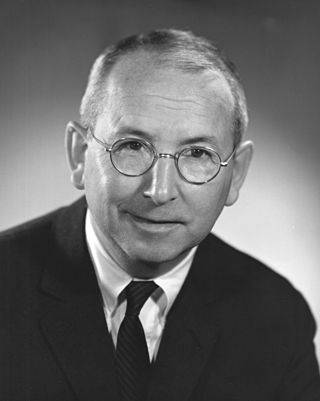
Paul Donald MacLean was an American physician and neuroscientist who made significant contributions in the fields of physiology, psychiatry, and brain research through his work at Yale Medical School and the National Institute of Mental Health. MacLean's evolutionary triune brain theory proposed that the human brain was in reality three brains in one: the reptilian complex, the limbic system, and the neocortex.
Affect theory is a theory that seeks to organize affects, sometimes used interchangeably with emotions or subjectively experienced feelings, into discrete categories and to typify their physiological, social, interpersonal, and internalized manifestations. The conversation about affect theory has been taken up in psychology, psychoanalysis, neuroscience, medicine, interpersonal communication, literary theory, critical theory, media studies, and gender studies, among other fields. Hence, affect theory is defined in different ways, depending on the discipline.

Allometry is the study of the relationship of body size to shape, anatomy, physiology and finally behaviour, first outlined by Otto Snell in 1892, by D'Arcy Thompson in 1917 in On Growth and Form and by Julian Huxley in 1932.

A taquito, taco dorado, rolled taco, or flauta is a Mexican food dish that typically consists of a small rolled-up tortilla that contains filling, including beef, cheese or chicken. The filled tortilla is then shallow-fried or deep-fried. The dish is often topped with condiments such as sour cream and guacamole. Corn tortillas are generally used to make taquitos. The dish is more commonly known as flautas when they are larger than their taquito counterparts, and can be made with either flour or corn tortillas.
Pablo Rudomin Zevnovaty is a Mexican-Russian biologist, physiologist, and neuroscientist. He is regarded as one of the most prestigious neurophysiologists in the international community. His studies have been fundamentally directed to the analysis of mechanisms of the central control of the information transmitted by the sensory fibers in the spinal cord, and of how these are modified during central and peripheral injuries, as well as during processes of acute inflammation.

Muscle hypertrophy or muscle building involves a hypertrophy or increase in size of skeletal muscle through a growth in size of its component cells. Two factors contribute to hypertrophy: sarcoplasmic hypertrophy, which focuses more on increased muscle glycogen storage; and myofibrillar hypertrophy, which focuses more on increased myofibril size. It is the primary focus of bodybuilding-related activities.
Equitation science is defined as "the application of scientific methods to assess objectively the welfare of horses undergoing training." It promotes an evidence-based understanding of horse-rider interactions. The goal is to apply valid, quantitative scientific methods to identify what training techniques are ineffective or painful, and to improve the horse-rider relationship by explaining horse training from a learning theory perspective that removes anthropomorphism and emotiveness. It can aid the training process by clarifying the roles of positive versus negative reinforcement, punishment, and by identifying stimuli that provoke unwanted responses or pain in horses. Equitation science uses psychological principles such as learning theory as well as equine ethology and biomechanics. It uses objective measures to score performance during training and competitions and identifies techniques that may result in equine suffering.

Tony Nader is a Lebanese neuroscientist, researcher, university president, author and leader of the Transcendental Meditation movement. He has a medical degree in internal medicine, received his Ph.D. from Massachusetts Institute of Technology and worked as a clinical and research fellow at a teaching hospital of Harvard Medical School.

Emeran Anton Mayer is a gastroenterologist, lecturer, author, editor, neuroscientist, documentary filmmaker and a professor in the Departments of Medicine, Physiology and Psychiatry at the David Geffen School of Medicine at UCLA. He is a pioneer of medical research into brain gut interactions
Matthew Nathan Levy was an American physiologist best known for his research on cardiac physiology and co-writing several textbooks with Robert M. Berne. Levy carried out pioneering research on the relationship between the heart and the autonomic nervous system and was sometimes referred to as "the father of neurocardiology".
Gordon Pennington Gunter was an American marine biologist and fisheries scientist. He is noted for his pioneering study of fisheries in the northern Gulf of Mexico, a topic to which he devoted his entire professional life over a career spanning 60 years. His own research, and that of the scientists under his direction, established an understanding of the ecology, comparative physiology of the plant and animal life, and commercial fisheries of the region, and he coined the phrase "fertile fisheries crescent" to refer to Mississippi Sound and adjacent waters along the United States Gulf Coast. He also pioneered the study of the comparative physiology of shellfish and fish.

Rebecca M. Calisi Rodriguez is an American neuroendocrinologist, wildlife biologist, and National Geographic Explorer. She is an Associate professor of Neurobiology, Physiology, and Behavior in the College of Biological Sciences at the University of California, Davis. Calisi leads a research team that studies how the brain controls sexual behavior, reproduction, and parental care, and how this changes under stress. As the Director for Science Communications at UC Davis, Calisi also studies science communication and advocates for inclusivity, equity, and diversity in STEM.
References
- ↑ "1929 Dr. McLean teaches "gnathology" in Mexico City (Straightening teeth)". The Los Angeles Times. 17 May 1929. p. 44.